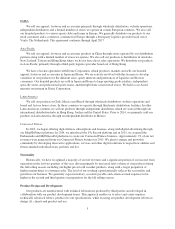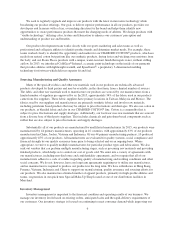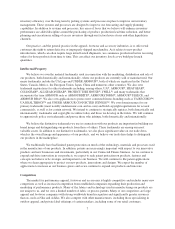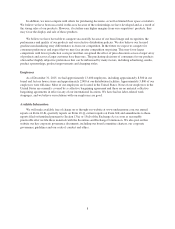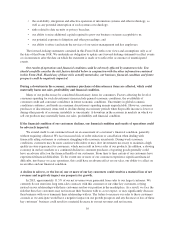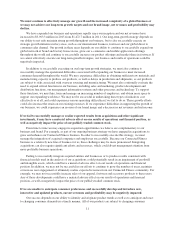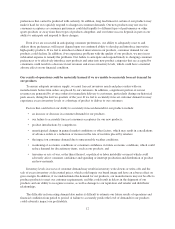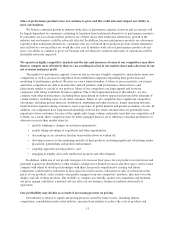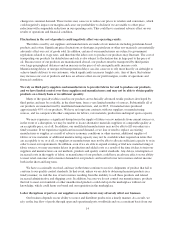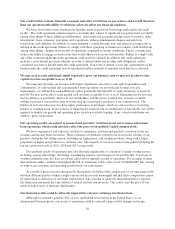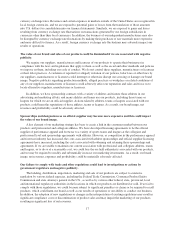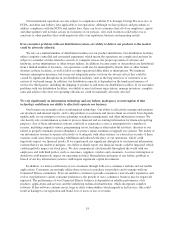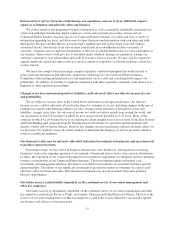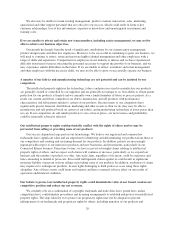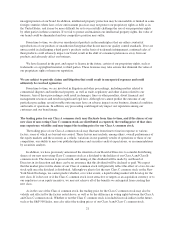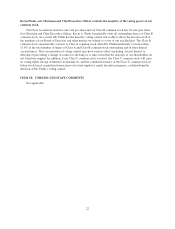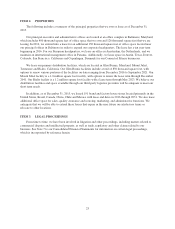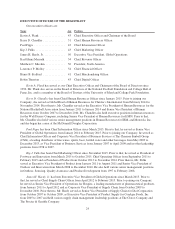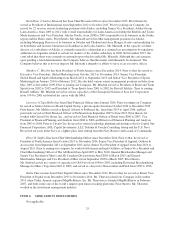Under Armour 2015 Annual Report Download - page 23
Download and view the complete annual report
Please find page 23 of the 2015 Under Armour annual report below. You can navigate through the pages in the report by either clicking on the pages listed below, or by using the keyword search tool below to find specific information within the annual report.suppliers and manufacturers. Labor disputes at various ports or at our suppliers or manufacturers create
significant risks for our business, particularly if these disputes result in work slowdowns, lockouts, strikes or
other disruptions during our peak importing or manufacturing seasons, and could have an adverse effect on our
business, potentially resulting in canceled orders by customers, unanticipated inventory accumulation or
shortages and reduced net revenues and net income.
Our limited operating experience and limited brand recognition in new markets may limit our expansion
strategy and cause our business and growth to suffer.
Our future growth depends in part on our expansion efforts outside of North America. During the year
ended December 31, 2015, 87% of our net revenues were earned in our North America segment. We have limited
experience with regulatory environments and market practices outside of North America, and may face
difficulties in expanding to and successfully operating in markets outside of North America. International
expansion may place increased demands on our operational, managerial and administrative resources. In
addition, in connection with expansion efforts outside of North America, we may face cultural and linguistic
differences, differences in regulatory environments, labor practices and market practices and difficulties in
keeping abreast of market, business and technical developments and customers’ tastes and preferences. We may
also encounter difficulty expanding into new markets because of limited brand recognition leading to delayed
acceptance of our products. Failure to develop new markets outside of North America will limit our opportunities
for growth.
The operations of many of our manufacturers are subject to additional risks that are beyond our control
and that could harm our business.
In 2015, our products were manufactured by 44 primary manufacturers, operating in 16 countries, with 10
manufacturers accounting for approximately 45% of our products. Approximately 63% of our products were
manufactured in China, Jordan, Vietnam and Indonesia. As a result of our international manufacturing, we are
subject to risks associated with doing business abroad, including:
• political or labor unrest, terrorism and economic instability resulting in the disruption of trade from
foreign countries in which our products are manufactured;
• currency exchange fluctuations;
• the imposition of new laws and regulations, including those relating to labor conditions, quality and
safety standards, imports, trade restrictions and restrictions on the transfer of funds, as well as rules and
regulations regarding climate change;
• reduced protection for intellectual property rights in some countries;
• disruptions or delays in shipments; and
• changes in local economic conditions in countries where our manufacturers and suppliers are located.
These risks could negatively affect the ability of our manufacturers to produce or deliver our products or
procure materials, hamper our ability to sell products in international markets and increase our cost of doing
business generally. In the event that one or more of these factors make it undesirable or impractical for us to
conduct business in a particular country, our business could be adversely affected.
In addition, many of our imported products are subject to duties, tariffs or other import limitations that
affect the cost and quantity of various types of goods imported into the United States and other markets. Any
country in which our products are produced or sold may eliminate, adjust or impose new import limitations,
duties, anti-dumping penalties or other charges or restrictions, any of which could have an adverse effect on our
results of operations, cash flows and financial condition.
15


